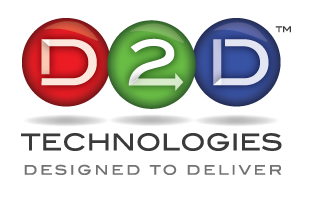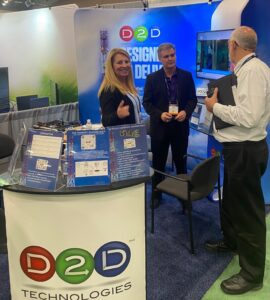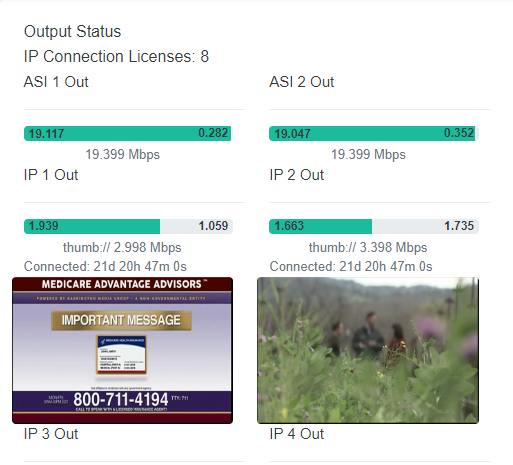Introducing the MultiFlex
Each D2Flex 4000 has an HDMI input and the power to stream 8K resolution streams. Have a sudden need to stream an HDMI source across the public Internet? No problem! Like all our products SRT, ZIXI, and RIST are built in. Need to change the resolution for bandwidth purposes? Simply set the D2Flex 4000 to a lower resolution and stream. Analog transcoding is easy. Have an 8K multi-view you want to share with another location. This is the encoder for you. Your CDN needs RTSP? It does that too. True to it’s name the D2Flex 4000 is a flexible encoder designed to deliver to drive, cloud, or CDN. The choice is yours. The D2Flex 4000 is a decoder too. Having to 2 HDMI outputs. Capable of (1) 8K out or (2) 4K outputs. Multi screen decoding for confidence is easy. All decoding is handled by a separate processor. This means you can monitor post processor encodes in real time. You can establish Bi-Directional encode decode pairs across the public internet using SRT, ZIXI, and RIST. You can even play back from optional internal drive in a time delayed fashion. That’s right! With features like time-delayed playback, reliable post-encode decode confidence monitoring, and the ability to decode fast streams as well as RTSP, this decoder alone would make it an invaluable tool for any broadcaster. Add the fact that it is also an encoder and it you can begin to see why we reference this family of products as MultiFlex. But wait there’s more… Unbelievably the D2Flex 4000 is also a streaming Transcoder. With the ability to do live transcoding, you could convert your OTA stream for delivery to another location at a lower bandwidth cost to the network. You could just as easily do the reverse and lower your bandwidth cost for IPSTL links. These are the simple choices. The complexity is up to you. With a D2Flex 4000 distributed transcoding system unique streams could be added and shared across a global footprint at high compression and then transcoded at the last mile node to meet delivery requirements. All D2Flex products come with built in browser interfaces. With D2Manage you can see the health of the stream and set your encode decode parameters. Once connected just save to your favorites and information is just a click away. D2D Technologies’ MultiFlex family of products redefines versatility, with the D2Flex 4000 serving as an encoder, decoder, and streaming transcoder, offering features such as time-delayed playback and real-time monitoring. Supported by D2Manage’s intuitive interface, D2D Technologies epitomizes reliability, adaptability, and innovation in the digital video landscape. The D2Flex 4000 truly is “Designed to Deliver”.
Merry Christmas and Happy Holidays from D2D Technologies!
Jess (00:00)
Hi, John. Steve. Merry Christmas.
Jon (00:03)
Merry Christmas, Jess.
Steve (00:05)
Merry Christmas, Jess.
Jess (00:07)
Hey, guys. It’s been such a great year. 2023 was absolutely amazing for D 2d technologies and we have so many great customers, some older customers, some newer customers, but all of them are just the best customers in the world. And I’m trying to think of something to do for them. I’m thinking maybe if I could knit them all socks or give them all a sweater or something, but I’m at Wits end. What can we give our customers, Steve, for 2024?
Steve (00:31)
Well, Jess, I actually have the perfect holiday gift. SRT redundancy! We’ve come out with this great new feature for the Flex 3500 and the Flex 5220. Let me explain a little bit how it works. So imagine you’re a station and you have two transmitters and you have a link going from the studio of the transmitter A and a link going from the studio of the transmitter B. You can also then set up SRT links between the transmitters. So if the link goes down from the studio of the transmitter a, transmitter a will automatically roll over and pull the stream from transmitter b. But that’s not all. If for some reason, the reason the link went down is the Internet is just totally down at transmitter a, you can have it set that if all the SRT links are down, it’ll actually roll over to a file that you’ve uploaded to the unit, which will be a loop. You could have technical difficulties, whatever video you want to have, just looping so that you’ll always be on the air, even if you have no Internet connections.
Jess (01:29)
Oh, fantastic. So no matter what, our customers won’t go dark, correct?
Steve (01:33)
Yeah, even if there’s no Internet access at all, they’ll still be on the air.
Jon (01:37)
So you mentioned the Flex 3500 and the Flex 52 20, but what if they only have a 3000?
Steve (01:45)
That’s a great question, John. And we wanted everybody to take advantage of this great new feature. So what we’re going to do from now through the end of January is offer a 15% discount on anybody who wants to upgrade from the Flex 3000 to the Flex 3500. So everybody can always remain on the air.
Jon (01:37)
So you mentioned the Flex 3500 and the Flex 52 20, but what if they only have a 3000?
Steve (01:45)
That’s a great question, John. And we wanted everybody to take advantage of this great new feature. So what we’re going to do from now through the end of January is offer a 15% discount on anybody who wants to upgrade from the Flex 3000 to the Flex 3500. So everybody can always remain on the air.
Jess (02:02)
Wow, perfect. A 15% discount on an upgrade from a base unit to a 3500 for the rest of January. So all of January. That’s a great gift, Steve. That’s the best thing ever.
Steve (02:22)
Right. So all you got to do is just click below, call us, hit our website, send a smoke signal, play the telephone game, whatever. Just contact us. We’ll get you all squared away.
Jess (02:33)
It’s a great gift. We couldn’t offer anything more for our wonderful, wonderful customers. And it’s going to be a fantastic 2024. I hope everybody stays tuned.
Jon (02:42)
Oh, me, too. I really hope everybody has a wonderful holiday and a merry Christmas.
Steve (02:47)
Merry Christmas, everybody. For all of us here at D to D. Ho ho
Get EAS Compliant Easily and Affordably
“What if the FCC fines us for noncompliance?”
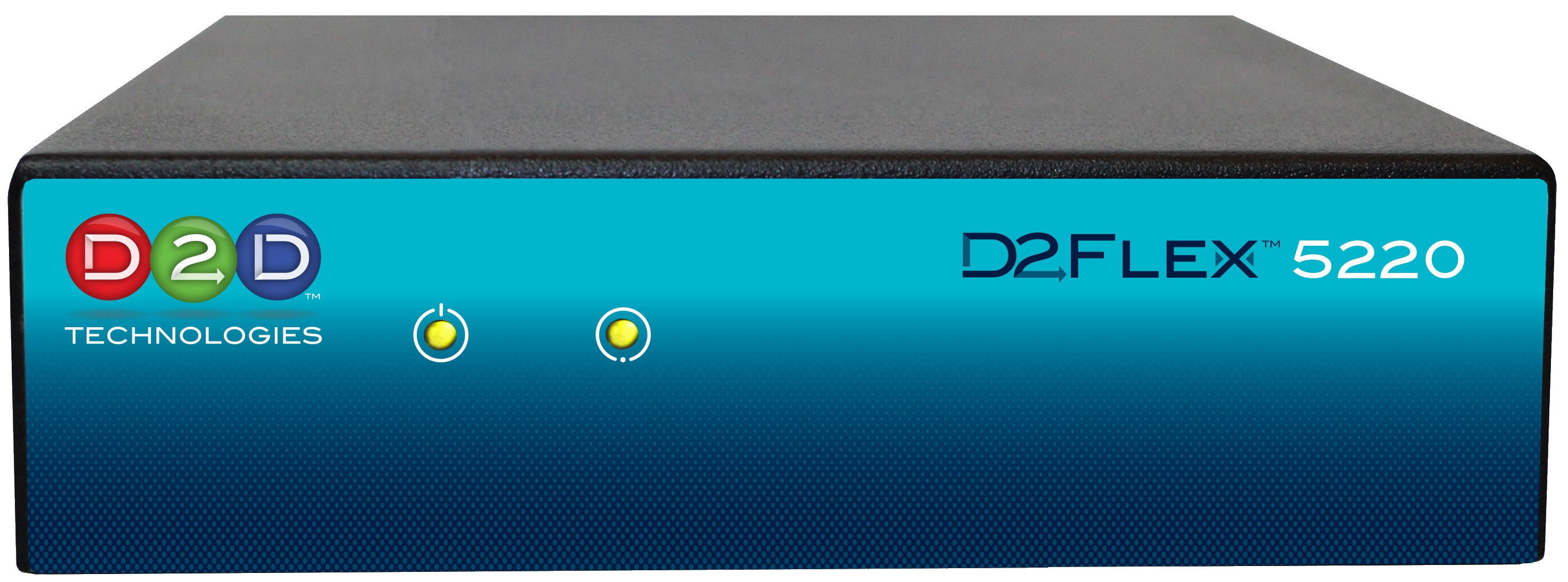
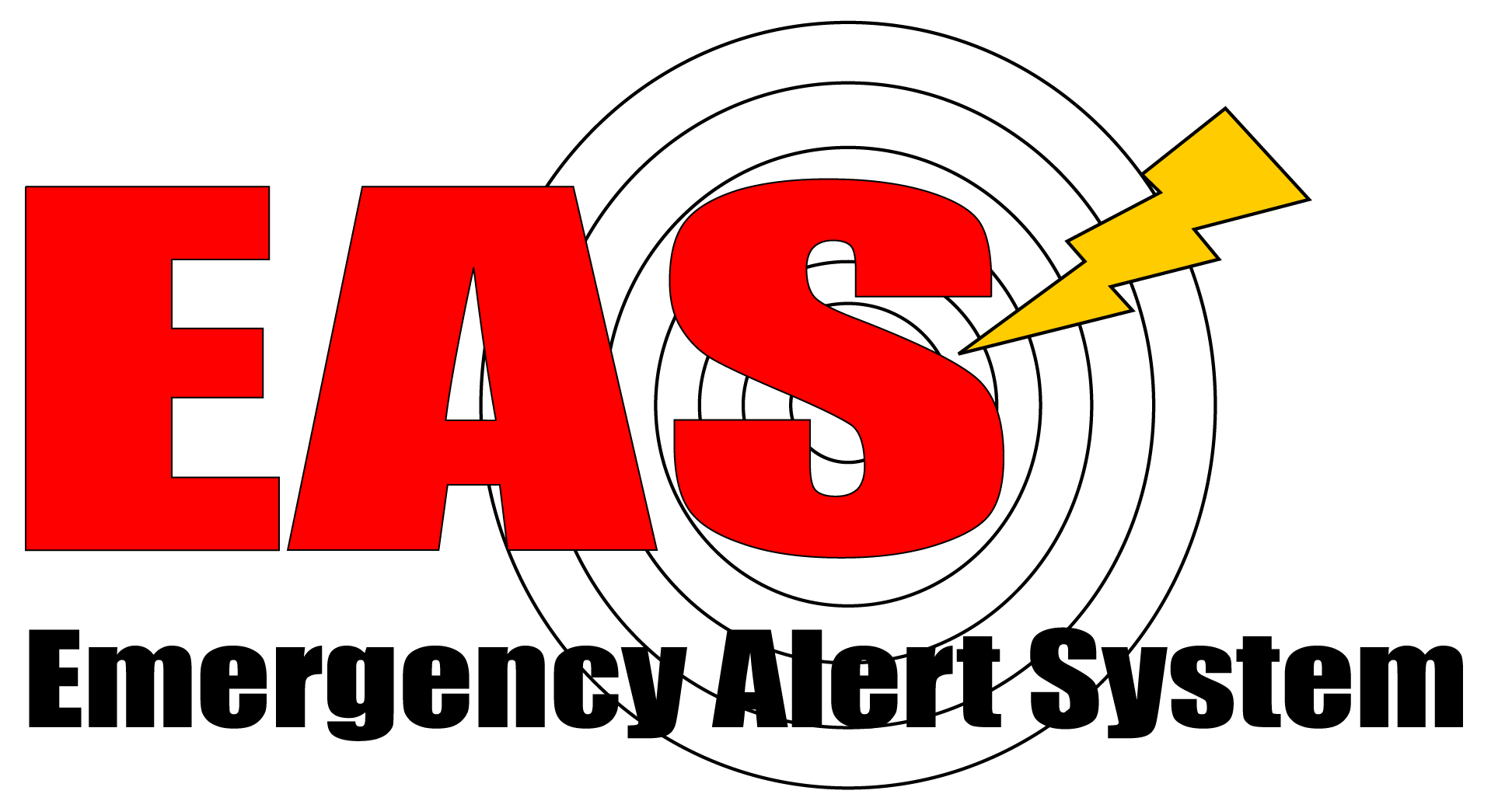
That thought is crossing the minds of more broadcasters since the recent nationwide EAS test.
After all, we see news reports of the major media conglomerates getting fined when they don’t
properly comply with EAS. And even at LPTV stations, an FCC field inspection could happen at
any time.
But if you’re like a lot of small and LPTV broadcasters, you haven’t taken the plunge to get
compliant yet. If cost is the reason you’ve held out, you can put worries about FCC
noncompliance fines behind you.
D2D has come together with our longtime partners at Digital Alert Systems to offer you an EAS
Package at a special promotional price. For the lowest price you’ll likely ever see for both
provider’s innovative systems (and less than the average FCC fine), you can get this
straightforward, dependable combination made for modern signal flows.
In the past, you’d have to get an MPEG encoder card that streams out video alert and
associated audio and then also get the insertion system to replace incoming channels with the
alert message and then switch back.
Now we’re going to make it incredibly easy for you to get compliant by putting both systems
together.
Digital Alert Systems DASDEC-III is a flexible, award-winning MPEG encoder card that
streams out the video alert and associated audio as a full screen replacement. From the trusted
leader in emergency messaging for more than 20 years, Digital Alert Systems, the DASDEC-III
features a small single box design, integrated receivers, advanced hardware interfaces, options
for multicasting, and robust information exchange protocols managed through a web interface.
Each EAS alert received and processed by the DASDEC-III is stored in non-volatile memory –
not just the text but the complete message, including the original audio. By retaining full
message details, you can have verification and confidence that you’re in compliance.
D2D D2Alert insertion system detects an EAS digital video signal and inserts it into the
configured multiplex, replacing the incoming channels with a full-screen EAS message for the
duration of the alert, and then switching back after the alert. It’s simple – no need for decoding
and re-encoding.
You can easily configure which channels should receive the EAS alert and which channels
should be left alone. If you prefer the look of an EAS crawl for your locally encoded primary
channel, you might do that and then use the full-screen EAS slate on your subchannels, giving
you flexibility and control.
You can get the Digital Alert Systems DASDEC-III and D2D D2Alert together for an all-time low
price. And as an optional add-on, you can future-proof your EAS with a Digital Alert Systems
Advanced Emergency Alert license for ATSC 3.0 support. Contact us for pricing information.
Want to find out more? Are you ready to get the worry-free confidence that comes with
compliance at the best price you’ll ever see? Get in touch with us.
NAB EAST 2023 in NYC
Come See Us at NAB East 2023 In New York City
Book a meeting at the show: https://calendly.com/jessica-colyer/nab-east-2023
Book a meeting not at the show: https://calendly.com/jessica-colyer
If you want to find out more about easy automated ad insertion, NAB Show NY is a great place to have one-on-one conversations that solve your day-to-day challenges. Steve and I will be at the Javits Center for NAB Show NY October 24–26. Will you be there? If you want to go but haven’t registered yet, use our guest pass code to register for free: NY7777. While you’re there, stop by the D2D booth (637) or book a meeting with us in advance to find out how to solve the problem of too many open avails that don’t get filled because of the time, staffing, and money it takes to fill them. Easy, cost-effective, automated ad insertion that allows you to be hands-off is the solution. Avails are presented to potential advertisers and they can even choose to focus on specific viewer groups. The system manages the sales process, and SCTE 35 ad insertion is fully orchestrated. You can get all your questions answered and even take the first step to getting started at the show. Here’s a preview of a few other things you’ll see at NAB Show NY that will increase newsroom efficiency and broadcast quality: The top ways stations are using SRT and the public internet for broadcasts How easy it is to add PSIP to your station Better ways to monitor your on-air chain The simple and economical solution to stay EAS compliant
5 Ways You’re Missing Out if You Don’t Try Automated Ad Insertion
Every day there are tens of thousands of avails unused and wasted at LPTV and small stations all across the country. If you’re thinking there’s got to be a better way for those avails to generate revenue that doesn’t require a huge budget or sales team, then you’d be right.
D2D Technologies has created a guide for broadcasters to find out what the buzz is all about with automated ad insertion and how easy it can be to monetize avails without extra work.
If you’d like to fill more of your ad avails but you don’t have the time, staff, expertise, or resources, it’s time to find out more about the new automated ad insertion technology that small stations are starting to use to fill more avails and bring in more revenue.
There’s simply nobody else doing this for broadcast television.
This new guide breaks down the no-brainer benefits of setting up turnkey automated ad insertion so you can focus your energy where it’s really needed, while you collect your money on autopilot.
Inside the guide, you’ll discover:
-
How algorithms replace the need for a sales staff
-
How this can be possible for you without investing in any equipment
-
The technology behind a truly seamless viewer experience
-
How to get the metrics you need to show off the value of your avails
-
How you can just sit back and collect your checks
-
Why now is the time to get involved within your market
Get your copy of the guide to find out more about this opportunity.
Find Out the Easy Way to Increase Ad Revenue During the Next Election Cycle
Watch the Ad Insertion Made Easy Webinar
Did you know that in the last few election cycles, around $6 billion have been spent on local over-the-air political ads?
Want your slice of that very large pie? Even a small slice during the upcoming election cycle can mean the difference between a tight budget and one with plenty to go around.
And yet, if you’re like a lot of small stations, you’ve got tons of avails that are going unfilled. Between the insertion equipment, a sales team, and the traffic system, there are too many big expenses to make it work (not to mention all the effort required for scheduling, playout, and billing).
But that doesn’t mean you can’t take advantage of open avails starting now, through the next election, and beyond.
You just need a new, better system. And that’s what we’ve created with automated ad insertion.
Watch our recent webinar, Ad Insertion Made Easy, to find out how to fill more avails and bring in more ad revenue during the next election season.
On the webinar, Steve Doll and I spoke with two special guests: Brian Wiles, CEO of Media Panache and Mark MacGregor, VP of Affiliate Relations at BizTV. Brian talked about the options they’ve come up with for measuring audience metrics so that you can go back to your advertisers with real data about how effective ads are. Mark shared his experience working with D2D on ad insertion as both a content creator and a broadcaster.
Here’s a taste of what we covered during the webinar:
-
The exact process of automated ad insertion
-
What’s required of you to make it work (hint: not much!)
-
The way you can tell which avails are being filled and how much you’re earning
-
Options you have within the ad exchange for measuring audience metrics
-
How it’s going for stations that have already started using automated ad insertion
You won’t want to miss finding out how you can target ads to specific demographics and even show your advertisers how effective their ads are through the use of QR codes.
After you watch, if you have any questions or want to know more about D2Insert, get in touch with us.
Fill More Avails & Earn More Ad Revenue (Without More Work)
D2 Insert makes it easy to fill open avails.
One dime may not be worth much, but 10,000 dimes start to turn into real money.
If you’re like a lot of LPTV and small stations, it just doesn’t make sense to pay a salesperson to
fill all of your avails when they only bring in a dime here, a quarter there.
And yet, it means that thousands of ad revenue opportunities slip through the cracks.
If you had the ability to fill those avails without taking up staff time (and crucially, without any
upfront costs) you’d jump at the chance, right?
That’s exactly what our own Steve Doll spoke about at the LPTVBA seminar during NAB – and
our new ad insertion offering, D2Insert.
Click here to join the LPTVBA in order to see the full seminar including the 30-minute Q & A
session.
With D2Insert, it’s easy to fill thousands of avails and collect more ad revenue.
You sit back and let D2Insert handle the entire process, presenting avails to potential
advertisers (either through an existing advertising marketplace or through D2D’s ad portal),
managing the sales process, and orchestrating SCTE 35 ad insertion.
You can even give advertisers the opportunity to focus on specific viewer groups. And you’ll be
able to log into D2Monitor, which comes included, and see verifications of what has been
inserting into all of your units so you can track how much you’re earning.
Are you interested in finding out more?
Here’s how it works… First, let’s get on a call and we’ll talk through details about your sub
channels, cue tones, demographics, and other info. Then we’ll get the automation set up.
Step 2 is we install your free D2Insert box. (We’ll do all of the setup for you remotely!) And
finally, step 3 is the money rolls in and you collect checks! It’s really that simple.
Ready to book your ad insertion jumpstart call to get started? Schedule it now.
Introducing D2 Insert!
At NAB, an Easy Way to Increase Revenue From Ads, Enrich Your Broadcast with ATSC 3.0, and
Much More
NAB 2023 was a big success! Thank you for stopping by the D2D booth to catch up.
If you’re one of the many broadcasters who told us you are frustrated and tired of letting local ad insertion
opportunities go unused – simply because you don’t have the staff resources to fill avails – we’re here to
make it easy for you.
D2Insert allows you to collect more revenue from ad insertion with no up-front cost to you. We use a
revenue share model, where we lease all of the equipment to you at no cost. All you have to provide is an internet connection and the right to insert on the local avails.
Broadcasters who are using D2Insert tell us that the best thing about it is how little they have to do! We
handle selling avails, inserting the ad, collecting payments, and disbursing the revenue. It couldn’t be
easier for you.
Ready to find out more and see if D2Insert is right for your station? Book a quick meeting.
Here’s a few more highlights you might have missed at NAB:
● You can enrich your broadcast services in so many ways with ATSC 3.0 – such as adding
graphical, entertaining content and links to station VOD, allowing for consistent station branding,
and supporting advanced emergency alerts with targeted information to help people navigate
disruptive weather and traffic on the D2Flex-5220 and OG-5220, our powerful multiplexers and full
duplex IP network gateways.
● You’ll be able to easily stay compliant (without a lot of additional cost) with D2Alert on the D2Flex-
5220, which also allows for optional PSIP data insertion.
● You can add redundancy to your broadcast with D2Switch, which offers you the ability to move to
a backup source from anywhere at any time. Used together with D2Monitor, you can even
automate switching to a secondary stream.
● You’ll be able to solve problems faster and allow your employees flexible work options with
D2Manage, the cloud-based monitoring system that’s included with all of our products.
● You can use SRT transmission on the public internet to get reliable, secure, and cost-effective live
video contribution with any of our D2Flex options.
Want to know more about any of these solutions? Contact us.
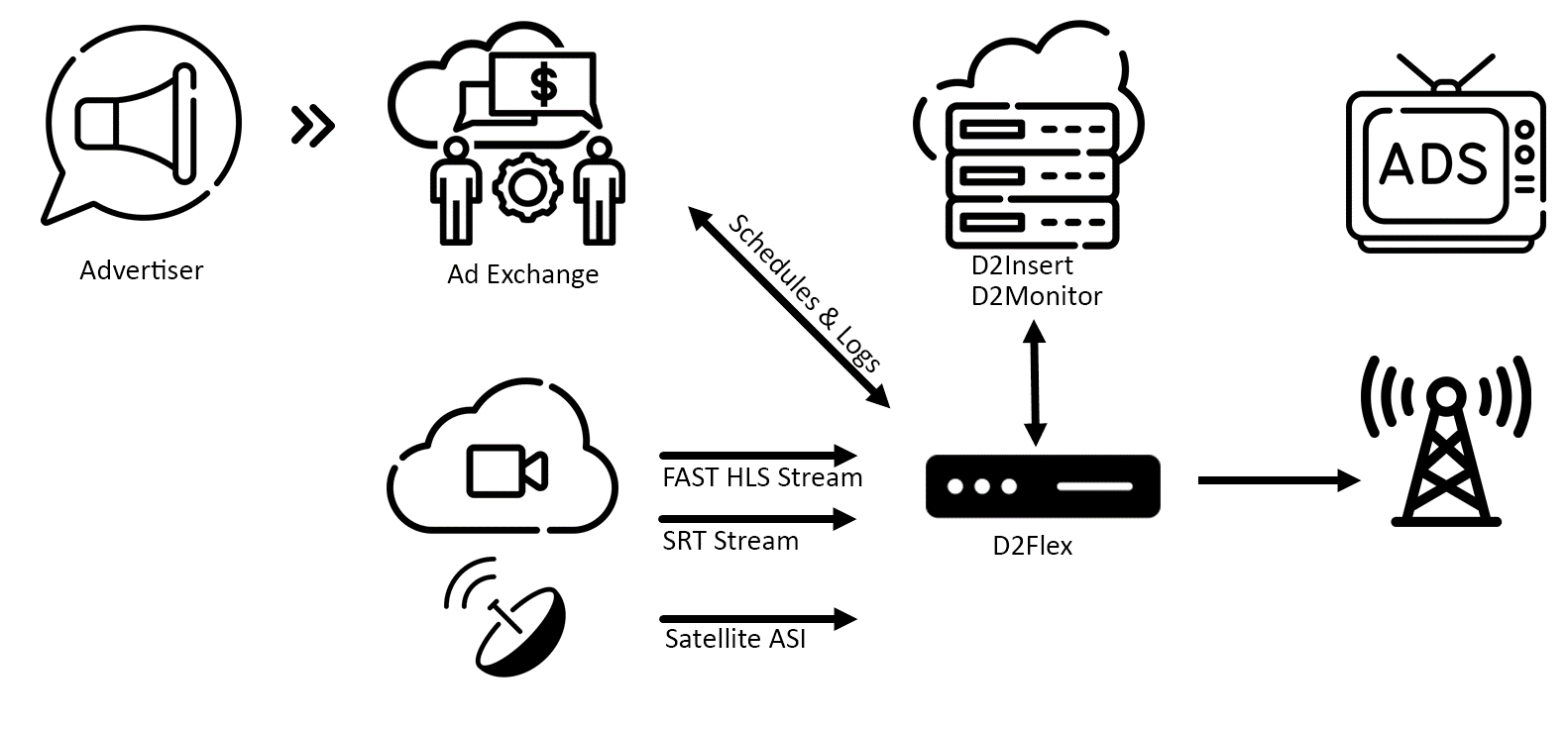
D2D at NAB 2023
Get SuperFrank’s insights on the FCC + EAS for LPTV [D2D webinar replay]
As the FCC starts to crack down on non-compliance, who better to get the low-down on maintaining EAS compliance for your LPTV station than “SuperFrank” Copsidas?
As president and founder of LPTV Broadcasters Association, and the owner of 10 LPTV stations, SuperFrank meets regularly with the FCC on topics including compliance. He was the star of our recent webinar: “How to Make Your EAS Insertion Easy and Affordable.”
If you missed the live conversation with SuperFrank, you can catch the replay here.
You’ll get SuperFrank’s insight into what folks at the FCC are most concerned about, the most critical challenges right now, and some solutions on the horizon for LPTV owners. You’ll also get practical advice you can use now and going forward. You’ll hear how you can:
- Automatically monitor EAS digital video signals for valid alerts and insert them into programming as appropriate until the alert is complete
- Easily configure the digital EAS elements to be used for insertion
- Selectively insert nationwide and local alerts on the channels you want in order to provide the coverage you need in your local market
SuperFrank covered a lot of ground, so this webinar is a great way to catch up quickly! If you have any questions after watching, just call or email. We’ve gotten a ton of interest in simple, affordable EAS compliance solution for LPTV stations, and we’d be happy to help you implement a solution and avoid hefty FCC fines!
D2Manage is a game changer
3 Benefits of D2Manage You May Not Know About
Inside our interface, D2Manage, all of our products can be accessed and controlled from anywhere in the world. That opens up the possibilities for our customers, and they are starting to use D2Manage to enjoy these benefits.
1. Solve problems faster.
Problems with the incoming feed don’t stop for nights and weekends. Even though the pressure’s on to resolve an issue quickly, it can be an hour or two before an engineer drives to the station, checks to see what the problem is, and then calls up IT to pester someone to open up port forwarding in order to fix it.
Instead, all the engineer has to do is simply set up Reverse SSH (Secure Shell) from the comfort and convenience of their home office, access the unit remotely via D2Manage, and make sure the feed is working.
The feed can be back up and running in minutes, with no need to drive to and from the station, no need for delay, no need to involve IT, and no need to risk opening the firewall.
2. Use SRT for the on-air feed.
Oftentimes on remotes, SRT is used only as a confidence monitor, not for the on-air chain. That means all of the feeds have to be converted to SDI before being plugged into the switcher.
Using our D2Manage interface, you can control the unit like you’re sitting right next to it – even if it’s in a different country – opening the possibility of using it for the on-air feed.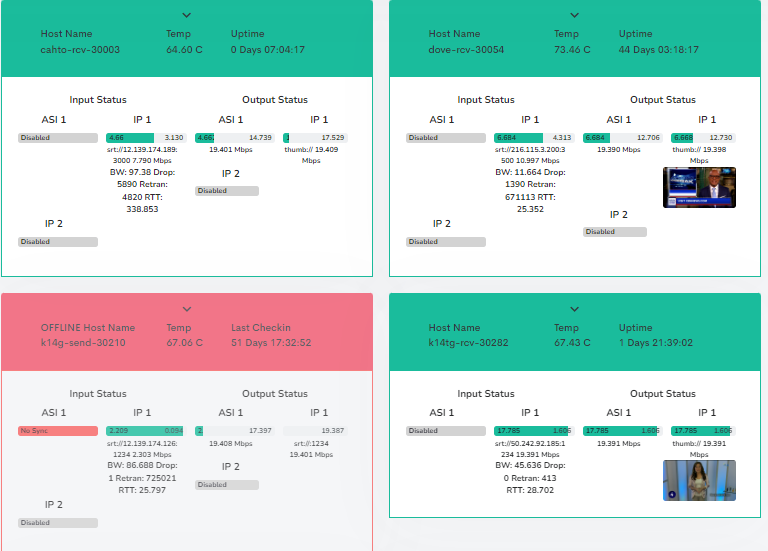
Instantly, you convert SRT to ASI, and send it anywhere it needs to go. You may not even need an engineer onsite. Some of our customers are setting it up before sending the box to a remote location, and then engineers at HQ (or even their own homes) can use D2Manage to take care of the rest.
3. Allow great employees flexible work options.
97% of employees want to work remotely at least some of the time, according to Forbes. With remote work options in high demand, anything you can do to allow for more flexibility will be attractive to top talent, and help you keep the great employees you currently have happy.
Customers who have started using D2Manage to control everything from any location have found that their engineers are excited, both by the technology, and by the ability to do their jobs from home, remote locations, or truly anywhere.
If you want to get started with D2Manage so you can enjoy these benefits that are available right now on all of our products, connect with us.

Introducing D2Switch!
3 Ways D2Switch Will Make Your Life Easier
The reason we’re so excited about the new D2Switch is that so many people have said, “You know, it would be really cool if you guys did this.”
Well, now we have! We’ve developed a solution that lets you switch your transport stream once it has left the station and gone “over the curve.” It’s as simple as punching a button on the switcher, and you can do it from anywhere. And you don’t even have to decode and re-encode your transport stream! It’s also a lot cheaper than solutions available on the market right now.
If you’re using SRT and the internet to send your broadcast signal to local stations across the country or around the globe, D2Switch is the perfect solution for fast, simple switching. You don’t need to spend a ton on an expensive splicer, breaking the signal out locally or at the transmitter. Instead, you can use D2Switch, which allows you to manage and automate switching through your D2Manage or D2Monitor interface.
So far, three use cases that have had customers clamoring for D2Switch. The first is remote switching to insert a local station ID and maintain compliance. You can simply upload a 10- or 15-second clip into the local unit and use D2Switch to schedule and automate playout at the top of the hour every hour, or whenever local regulations governing your station require it. It helps to keep you legal and saves you money because you don’t have to break your signal into baseband and then take it back into the compressed domain just to get your local station ID to air.
Another great application for D2Switch is switching to local content as needed, whether on a scheduled basis or in the event of a compliance issue, for a particular market. If you’re channel sharing, you could use D2Switch to automatically move to nightly local news or evergreen content during prime time rather than network programming so that you don’t encroach on network content being broadcast in another market. You could also use D2Switch for manual remote switching if you discover that content currently being broadcast isn’t in compliance with local content standards.
Clearly, with the ability to switch easily between transports streams, you can also use D2Swtich to add redundancy to your broadcasts. From anywhere at any time, you can simply move to a backup source. Of course, we’ve integrated D2Switch into our D2Manage and D2Monitor interfaces, so it’s not up to you to do the switching. You can set up a primary and secondary stream, and the switch will happen automatically if a certain threshold is met in terms of packet loss or other issues that are compromising the signal.
Any one of these three use cases is pretty valuable for anyone using SRT to deliver their broadcasts, and D2Switch supports them all. If you’re interested in learning more, sign up for a quick demo. (It really is as easy as it sounds.) Customers have been asking for this capability for a reason. It’s a game-changer!
How ATSC 3.0’s Data Applications Are Redefining Possibilities in Broadcast
Data applications are key to the success of ATSC 3.0, and under that umbrella fall broadcaster
applications and datacasting. Broadcaster apps are exciting because they bring so much interactivity,
choice, and added value to the viewing experience. Datacasting is amazing because it delivers on the
ATSC 3.0 promise of mobile content delivery, and the applications for it are countless and incredible!
So, what is a broadcaster app, and how does it work? A broadcaster app essentially consists of a client-
side web application with resources such as HTML5, CSS, JavaScript, images, and multimedia delivered in
the ATSC 3.30 stream. At each ATSC 3.0-compliant receiver, a server-side application renders these
resources. A WebSocket protocol is used to communicate user settings, receive event notifications, and
request actions such as video scaling, and it’s also what supports use of a remote to move a cursor
around the screen in an interactive way.
While these receiver side servers are simple, rendering only the pages, the broadcast application can
leverage an additional broadband connection to connect to richer applications in the cloud, such as
payment processing and user authentication.
Datacasting via ATSC 3.0 leverages broadcasting’s one-to-many architecture to push data to remote
devices, even a car going 70 miles an hour down the highway. The concept has been around a long time
— since the early days of ATSC 1.0 — but the devices you’re casting to no longer have to be stationary!
The power of broadcaster apps and datacasting are brought together by another interesting concept
with ATSC 3.0: the companion devices protocol. This protocol allows you to have a hybrid application
using both broadcaster apps and datacasting, and the upshot is that you can communicate with other
devices such as computers, tablets, and mobile phones.
So, ATSC 3.0 can empower you to enrich your broadcast services in many ways. You can start adding
graphical content such as showcards or pictures of actors to your broadcast services. You can also add
actor bios, links to IDMB entries, previews, and links for station VOD content. You can also brand your
station consistently across different types of receivers and electronic service guides (ESGs).
It also can support services including advanced emergency alerts, or as we like to call them, advanced
emergency information. These are a category of broadcaster apps all on their own, and they can
complement your existing traditional EAS by providing extensive, targeted, graphical information to help
people navigate and get through disruptive or dangerous weather, traffic, and other events.
Broadcaster apps and datacasting have the potential to do so much more! One pilot program is working
to address remote learning needs for students without good broadband access. This is just the tip of the
iceberg for ATSC 3.0 data applications. As more and more broadcasters see the possibilities for this new
standard, we’ll see more and more incredible things come of it.
If you’re interested in learning how your station can do incredible things with ATSC 3.0, get in touch.
We’d love to talk through the possibilities
